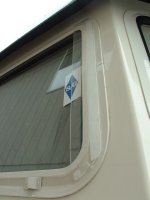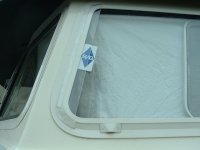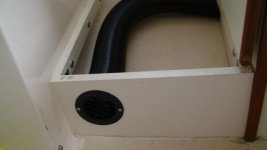To my knowledge, Espar and Webasto make similar forced air diesel heaters, and they can be used in boats like ours, of course, but their smallest models can overheat a smaller boat like the 22, or even the 25 in more moderate climates. In smaller boats and more moderate settings, they can cycle on and off a lot, keeping folks awake. These are both German makes of heaters.
Toyotomi, (Japanese, of course) also makes forced air diesel heaters with the same basic characteristics, but if I'm correct, the firing method is more wick-like in the Toyotomi, whereas in the former two the diesel is sprayed into the combustion chamber more like a shop style space heater, although the exhaust goes outside, and the heat is absorbed in a heat exchanger fanned by the forced air circulation.
The reason I'm unsure about their internal functioning is that the information you can get on their sites is limited, sometimes only amounting to a few claims and diagrams, and not anything like a full technical write up. They must think we're a bunch of dummies, no???
The real questions I'd have to ask myself before choosing one of these heaters are these:
1. Do I need that much heat? (BTU's)
2. Is the heater too large for my boat, forcing it to cycle on and off all night, keeping me awake? (assuming a thermostat, these units don't work on high, medium, and low, or infinitely adjustable settings. They're ON or OFF!)
3. Can I afford the space to install it, the ducting, and it's fuel tank?
4. Is the heater worth the cost, which is usually $2000-$3000 when installed?
5. Would another alternative like a propane heater (such as the Dickinson Propane Fireplace @ ~$1000) or a generator (Honda 2000i=$900) and an electric heater ($60) work just as well for me?
Not trying to stir up a controversy, just food for thought!
Joe. :teeth :thup




